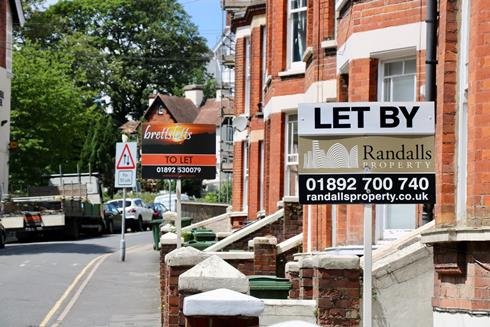In the ever-shifting landscape of the UK property market, landlords have had to grapple with a multitude of changes, from stringent regulations to altering tenant dynamics.

The most recent concern on the horizon? Rising interest rates. As the Bank of England has started to increase rates, landlords across the UK are trying to decipher what this means for their investments.
The Immediate Impact: Mortgage Costs
For landlords with a variable rate or tracker mortgages, rising interest rates equate to higher monthly repayments. This could squeeze profit margins, particularly for those who have taken on large amounts of debt or have properties in areas where rental yield is lower. Landlords must critically assess their portfolios and consider whether it might be time to refinance or switch to a fixed-rate mortgage to insulate themselves from future hikes. Companies like Open Property Group who facilitate the option of landlords selling their house with tenants means that even if the property is in negative equity, that a sale can still go ahead.
Pressure on Rental Income
With interest rates on the rise, the cost of borrowing increases for everyone, not just landlords. Tenants might find themselves stretched as their own personal debts, such as credit cards or variable rate loans, become more expensive. This could translate to resistance against rental increases, or worse, heightened instances of late or missed payments.
In light of this, landlords need to strike a balance. While it’s essential to cover increased mortgage costs, pushing for steep rent hikes might deter potential tenants or strain relationships with current ones.
Property Valuation and Equity
Higher interest rates can lead to softer property prices as potential homebuyers find mortgages more expensive, reducing the pool of buyers and cooling demand. For landlords, this might mean the value of their investment properties could stagnate or even dip.
On the flip side, those with significant equity in their properties could use this to their advantage. A slower market presents buying opportunities, and landlords in a strong equity position might find bargains if they’re looking to expand their portfolios.
The Silver Lining: Rental Demand
While rising interest rates can impact the property market’s buying side, they can bolster the rental side. As mortgages become more expensive, some would-be homeowners might delay their buying plans, opting to rent for longer. This can drive up demand for rental properties, potentially leading to higher occupancy rates for landlords.
Strategies for Navigating Rising Rates
While the prospect of higher interest rates might seem daunting, proactive landlords can employ several strategies:
- Refinance:?Now might be an opportune time to shop around for mortgage deals, especially if you’re on a variable rate. Consider locking in a fixed rate to ensure predictability in your repayments.
- Assess Your Portfolio:?If some properties are underperforming, it might be worth considering a sale, especially if the rental income isn’t covering the increased mortgage costs.
- Build Strong Tenant Relationships:?A loyal tenant base can be invaluable. Ensure you maintain open communication, be responsive to their needs, and avoid hiking rents abruptly.
- Diversify:?If you’ve always invested in one area or type of property, consider diversifying. Different regions or property types might offer better yields or more resilience against market fluctuations.
Rising interest rates certainly present challenges for UK landlords, but they’re far from insurmountable. With careful planning, adaptability, and a keen eye on the market, landlords can navigate these changes successfully, ensuring their property investments continue to thrive.


